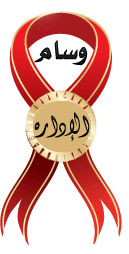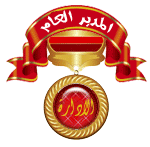THE BIG DILEMMA
I- The Plan of Cyrus the Great to recover Croesus (Mago I) TreasureWhat we already know:Dido's and Croesus treasures landed in Carthage.
Bassus tiped Nero with information of an existing treasure in a cave in North Africa.
Croesus paid the Carthagian priests to be King of Carthage under the name of Mago I.
No one knows about the end of Croesus except Cyrus the great.
In this post we will know how Cyrus the Great made a successful plan to
recover Croesus treasure, this plan was at work from 550 BC to 149 BC
the fall of Carthage
II- Definitions: 1- Cyrus the Great: (c. 600 BC or 576 BC–530 BC), also
known as Cyrus II or Cyrus of Persia, was the founder of the Persian
Empire under the Achaemenid dynasty. Under his rule, the empire embraced
all the previous civilized states of the ancient Near East,expanded
vastly and eventually conquered most of Southwest Asia and much of
Central Asia, parts of Europe and Caucasus. From the Mediterranean sea
and Hellespont in the west to the Indus River in the east, Cyrus the
Great created the largest empire the world had yet seen.
The reign of Cyrus the Great lasted between 29 and 31 years. Cyrus built
his empire by conquering first the Median Empire, then the Lydian
Empire and eventually the Neo-Babylonian Empire. Either before or after
Babylon, he led an expedition into central Asia, which resulted in major
campaigns that brought "into subjection every nation without
exception." Cyrus did not venture into Egypt, as he himself died in
battle, fighting the Massagetae along the Syr Darya in December 530 BC.
He was succeeded by his son, Cambyses II, who managed to add to the
empire by conquering Egypt, Nubia, and Cyrenaica during his short
rule.(a)
 Cyrus the Great
Cyrus the Great (also Khurrites) were a people of
the Ancient Near East who lived in Northern Mesopotamia and adjacent
regions during the Bronze Age. The largest and most influential Hurrian
nation was the kingdom of Mitanni. The population of the Hittite Empire
in Anatolia to a large part consisted of Hurrians, and there is
significant Hurrian influence in Hittite mythology. By the Early Iron
Age, the Hurrians had been assimilated with other peoples, except
perhaps in the kingdom of Urartu.
The Mitanni were closely associated with horses. The name of the country
of Ishuwa, which might have had a substantial Hurrian population, meant
“horse-land”. A famous text discovered at Hattusa deals with the
training of horses. The man who was responsible for the horse-training
was a Hurrian called Kikkuli. The terminology used in connection with
horses contains many Indo-Aryan loan-words. (b)
3- The Assyrians: the Assyrian/Chaldean/Syriac people
(frequently known as Assyrians, Syriacs, Syriac Christians,
Suroye/Suryoye, Chaldeans, and other variants, see names of Syriac
Christians) are an ethnic group whose origins lie in the Fertile
Crescent. Today that ancient territory is part of several nations; the
Assyrian/Chaldean/Syriac people have been minorities under other ethnic
groups' rule since the early Middle Ages. They have traditionally lived
all over Iraq, northeast Syria, northwest Iran, and the Southeastern
Anatolia region of Turkey.(c)
Assyria and Babylon became major powers. There were further influxes of
peoples such as Hurrians, Kassites, Hittites and Mitanni, the former two
peoples ruled Babylon for a time, and the Hittites and Mitanni
dominated Assyria for a short period. Hurrians and Kassites seem to have
disappeared into the general population in southern Mesopotamia, while
the Mitanni and Hittites were overthrown and driven out of the north.
"In Achaemenian times there was an Assyrian detachment in the Persian
army, but they could only have been a remnant. That remnant persisted
through the centuries to the Christian era, and continued to use in
their personal names appellations of their pagan deities. This
continuance of an Assyrian tradition is significant for two reasons; the
miserable conditions of these late Assyrians is attested to by the
excavations at Ashur, and it is clear that they were reduced to extreme
poverty under Persian rule." (d)
The Assyrian demand for precious metals was the main cause of Phoenician colonization in the Western Mediterranean.(e)
Map of the Assyrian Empire
http://explorethemed.com/Assyrians.asp?c=1
4- Numidians: were Berber tribes who lived in Numidia, in
Algeria east of Constantine and in part of Tunisia . The Numidians were
one of the earliest natives to trade with the settlers of Carthage. As
Carthage grew the relationship with the Numidians blossomed. Carthage's
military used the Numidian cavalry as mercenaries. Numidia provided some
of the highest quality cavalry of the Second Punic War, and the
Numidian cavalry played a key role in a number of battles, both early on
in support of Hannibal and later in the war after switching allegiance
to the Roman Republic.(f)
The Numidians are originally persians contingent in the army, they
settled first in the desert with the Gaetuli and become Pharusii, some
of them moved north between Mauretania and Carthage to create
Numidia.(g)
5- Masaesylii and Massylies: they are the most important
two tribes which forms the Numidians the Masaesylii are based in the
west Known by their King Syphax and the Massylies based in the east
known by their king Massinissa(h)
 Massinissa Famous King of Massylies (238 BC - 148 BC)
Massinissa Famous King of Massylies (238 BC - 148 BC) was a type of light cavalry developed
by the Numidians, most notably used by Hannibal during the Second Punic
War. They were described by the Roman historian Livy as "by far the best
horsemen in Africa." The Numidian cavalry's horses, ancestors of the
Arabian horse, were smaller than those of the contemporary Roman cavalry
and were well adapted for faster movement. To conserve weight, the
cavalrymen did not use a saddle or bridle, did not wear armor, and
carried smaller shields. Their weaponry consisted mainly of spears and
javelins, in addition to a short sword.(i)
7- The Battle of Zama: fought around October 19, 202 BC,
marked the final and decisive end of the Second Punic War. A Roman army
led by Publius Cornelius Scipio Africanus, allied with Berber Numidian
forces, defeated a Carthaginian force led by the legendary commander
Hannibal. Soon after this defeat on their home ground, the Carthaginian
senate sued for peace, which was given to them by the Roman Republic on
rather humiliating terms, ending the 17-year war.(j)
8- Hasdrubal the Boeotarch: was a Carthaginian general
involved in the Punic Wars.Little is known about Hasdrubal the
Boeotarch, the general who lost the Third Punic War to Scipio
Aemilianus, Consul of the Roman Republic at the Siege of Carthage in 146
BC. His military skill was not to be doubted, as his army had been well
trained and equipped and his work at defending Carthage cost the Romans
a difficult campaign to suppress the defenders, but his tactical skills
were dwarfed by his contemporaries, Masinissa and Scipio. He also had a
wife and two sons, who, according to an account by Polybius, threw
themselves into a burning temple when they saw Hasdrubal's army defeated
by the Roman attackers. Hasdrubal surrendered himself to the Romans
after his family's unfortunate deaths, but what happened to him after
that is not known.
This may be the same general Hasdrubal who was defeated near the town of
Tunes (now Tunis) by the Numidian king, Masinissa, just after war was
declared (149 BC).(k)
9-Adherbal: The son of Micipsa, and grandson of
Masi-nissa, had the kingdom of Numidia left to him by his father in
conjunction with his brother Hiempsal and Jugurtha, b. c. 1 1 8. After
the murder of his brother by Jugurtha, Adherbal fled to Rome and was
restored to his share of the kingdom by the Romans in b. c. 117. But
Adherbal was again stripped of his dominions by Jugurtha and besieged
in Cirta, where he was treacherously killed by Jugurtha in B. c. 112,
although he had placed himself under the protection of the Romans.
(Sail. Jug. 5, 13, 14, 24, 25, 26; Liv. Ep. 63 ; Diod. Exc. xxxiv. p.
605. ed. Wess.) (l)
10- The Battle of Carthage:a- was the major act of the Third Punic War between the
Phoenician city of Carthage in Africa (a suburb of present-day Tunis)
and the Roman Republic. It was a siege operation, starting sometime
between 149 and 148 BC, and ending in the spring of 146 BC with the sack
and complete destruction of the city of Carthage.
After a Roman army under Manius Manilius landed in Africa in 149 BC,
Carthage surrendered and handed over hostages and arms. However, the
Romans demanded the complete destruction of the city, and surprisingly
to the Romans the city refused, the faction advocating submission
overturned by one in favor of defense.
The Carthaginians manned the walls and defied the Romans, a situation
which lasted for two years due to poor Roman commanders. In this period,
the 500,000 Carthaginians inside the wall transformed the town into a
huge arsenal. They produced about 300 swords, 500 spears, 140 shields
and 1,000 projectiles for catapults daily.
The Romans elected the young but popular Scipio Aemilianus as consul, a
special law being passed to lift the age restriction. Scipio restored
discipline, defeated the Carthaginians in a field battle, and besieged
the city closely, constructing a mole to block the harbor.
In the spring of 146 BC the Romans broke through the city wall but they
were hard pressed to take the city. Every building, house and temple had
been turned into a stronghold and every Carthaginian had taken up a
weapon. The Romans were forced to move slowly, capturing the city house
by house, street by street and fighting each Carthaginian soldier who
fought with courage born of despair. Eventually after hours upon hours
of house-to-house fighting, the Carthaginians surrendered. An estimated
50,000 surviving inhabitants were sold into slavery. The city was then
leveled. The land surrounding Carthage was declared ager publicus, and
it was shared between local farmers, and Roman and Italian ones.
Before the end of the battle, a dramatic event took place: the few
survivors had found refuge in the temple of Eshmun, in the citadel of
Byrsa, although it was already burning. They negotiated their surrender,
but Scipio Aemilianus expressed that forgiveness was impossible either
for Hasdrubal, the general who defended the city, or for the Roman
deserters. Hasdrubal then left the Citadel to surrender and pray for
mercy (he had tortured Roman prisoners in front of the Roman army). At
that moment Hasdrubal's wife allegedly went out with her two children,
insulted her husband, sacrificed her sons and jumped with them into a
fire that the deserters had started. The deserters then jumped into the
fire too, and Scipio Aemilianus started crying. He shouted a sentence
from Homer, a prophecy about the destruction of Troy, that could be
applied now to Carthage's end:(m)
 Battle of Zama. File:Schlacht beiZama Gemälde H P Motte
Battle of Zama. File:Schlacht beiZama Gemälde H P Motte"The story of the final stages of the war are difficult to
understand. Our sources accuse Hasdrubal of trickery, to get rid of the
other Hasdrubal (Adherbal); and we read about his cruel behavior towards
his fellow citizens. Finally, we read that he opened negotiations with
the Romans and betrayed his own city. It is hard to establish the truth
of these stories, but it is reasonable to assume that the last story
stems from Roman propaganda and was vented out to demoralize the last
Carthaginian opposition."(n)
c- Unfortunately, the watchdog merely created new troubles. As an
ally of Rome, Massinissa could always raid Carthaginian land. In 154,
Carthage decided to strike back, and began to build an army.
Immediately, the Romans investigated the case, and they tried to strike a
compromise. But Massinissa's raids continued, and in 151, the
Carthaginians declared war upon the Numidians.
Their commander was Hasdrubal, who was unable to defeat Massinissa, and
accepted negotiations. A compromise would be made by the Roman Publius
Cornelius Scipio Aemilianus. However, during the negotiations,
Hasdrubal's supplies ran out, and Massinissa charged again, destroying
the Carthaginian army. When the survivors tried to return home,
Massinissa's son Gulussa continued the attacks. The greatest disaster,
however, was that this incident gave Rome the pretext it needed to
intervene. And indeed, Rome declared war. After all, Carthage had taken
an initiative in its foreign policy.
The Carthaginians immediately condemned Hasdrubal to death, blaming him
for the entire war, and hoping to avoid war with Rome. However,
Hasdrubal escaped, recruited a private army, started to besiege
Carthage, and was received back when it became obvious that Rome wanted
war anyhow. He was appointed as supreme commander, an office he had to
share with a grandson of Massinissa, who was also called Hasdrubal
(Adherbal). The Romans were already at the gates and the Carthaginians
toiled day and night to prepare the city's defenses.(o)
III- Understanding from Definitions:Cyrus the Great decided to make a succesful strategy to recover Croesus
treasure, first by choosing the best agents from the Assyrian detachment
in the Persian army, these agents they are known with hight qualities
in fighting, like their ancetors the Hurrians. Their first mission is to
arrive to north Africa from Spain and then travel South East, East then
North, to separate into two groups and intermarring the Nommade (
Gaetuli ), to create two strong tribes neighbours to Carthage, under two
different names ( Masaesylii and Massylies ).
They achieved their objectif after 400 years following differents
strategies and tactics; the significant clear signs of these strategies
the battle of Zama and the fall of Carthage.
The story of the end of Hasdrubal the Boeotarch has many similarities
compared to the story of the end of Croesus cited in the second dilemma
within this blog (story of the pyre). we understand from the two stories
that Hasdrubal the Boeotarch made a deal for his safety with Adherbal
son of Micipsa to transfer all the carthagians treasures including Dido
and Croesus treasures to the capital of Numidia which is Cirta that was
the base of Adherbal.








 هوِّر يابو الهوَّارة .. بلادي ارض الحضارة يلي ما بيعرفها منيح يرافقني ليها زيارة
هوِّر يابو الهوَّارة .. بلادي ارض الحضارة يلي ما بيعرفها منيح يرافقني ليها زيارة




 عدد المساهمات
عدد المساهمات السٌّمعَة
السٌّمعَة تاريخ التسجيل
تاريخ التسجيل تعليق
تعليق



 12.08.11 22:16
12.08.11 22:16


















